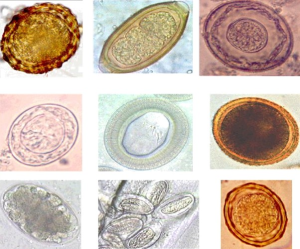
Five distinct subtypes of prostate cancer identified
Molecular stratification is used to guide treatment for some cancer types, including breast and lung cancer. However, the genetic subtypes of prostate cancer are less well understood, and it is very difficult to know which patients have more aggressive cancers that require more intensive treatment.
Now, scientists have identified five different subtypes of prostate cancer, each with distinct genetic architecture. They analyzed samples from 259 men with prostate cancer, separated into discovery and validation cohorts. The patients were divided into subgroups based on copy number and gene expression profiling, and it was found that the different subgroups were able to predict disease relapse.
These findings could help doctors decide on the best course of treatment for each individual patient, based on the characteristics of their tumor…
Dr Alastair Lamb
While further research is needed to see whether molecular stratification could be used to guide prostate cancer treatment in the clinic, these important findings reveal the potential of integrated genomic analysis to predict clinical outcome in prostate cancer. Study author Dr Alastair Lamb said that:
“These findings could help doctors decide on the best course of treatment for each individual patient, based on the characteristics of their tumor…the next step is to confirm these results in bigger studies and drill down into the molecular ‘nuts and bolts’ of each specific prostate cancer type”
Ross-Adams et al., EBioMedicine
Can frailty predict outcome in patients with heart failure?
Frailty in older people is associated with a number of adverse health outcomes, including multimorbidity and mortality risk. Now, researchers from Japan have analyzed data from a cohort of patients with congestive heart failure (CHF) to see whether frailty can predict prognosis.
181 patients were followed up for two years, and frailty was assessed through measures of grip strength and activities of daily living. Those meeting all frailty criteria had a four-fold higher risk of suffering a cardiac event compared with those who were not classified as frail.
The results suggest that frailty criteria could be markers of adverse outcome in patients with CHF. The authors conclude that assessing patients’ frailty may inform rehabilitation strategies following diagnosis of CHF.
Yamada et al., ESC Heart Failure
Which chemotherapy regimen for NSCLC?
Non-small cell lung cancer (NSCLC) is the most common type of lung cancer, accounting for around 80% of cases. Docetaxel, a type of chemotherapy, is recommended as first-line treatment for NSCLC in many countries, but its efficacy compared with other chemotherapeutic agents has not been fully established.
A meta-analysis has been conducted to compare the efficacy and safety of docetaxel with two other types of chemotherapy, pemetrexed and vinca alkaloids. The authors searched for phase III clinical trials comparing the different agents, and seven trials were included in the final analysis.
Docetaxel was found to be superior to vinca alkaloids in terms of safety and efficacy, but no clear differences between docetaxel and pemetrexed were observed. These findings support current recommendations to use docetaxel for the treatment of NSCLC, but highlight that further studies are needed to elucidate whether docetaxel is superior to pemetrexed.
He et al., OncoTargets and Therapy
Helminth infections could influence malaria susceptibility
Malaria and helminth infections are major public health threats in Africa, particularly among children. To better understand possible interactions between these infections, a study conducted in Nigeria investigated the prevalence and impact of Plasmodium falciparum malaria and intestinal helminth co-infection in children aged between 4 and 15 years old.
Over 60% of children were infected with either malaria or a helminth infection, and 14% of children had both infections.

Four different species of helminth infection were identified, and those infected with Hymenolepis species were more likely to be infected with P. falciparum than children without Hymenolepis infection.
Taken together, these results suggest a possible interaction between helminth and malaria infections, and indicate that Hymenolepis helminths could increase susceptibility to malaria in Nigerian schoolchildren.
Adedoja et al., PLOS Neglected Tropical Diseases
Predicting outcome after colorectal surgery
Surgery is a curative treatment for colorectal cancer (CRC) in many patients, but is associated with post-operative mortality in around 5% of patients. It is therefore important to establish predictors of mortality in CRC patients undergoing surgery.
Human serum albumin (HSA) levels are known to be associated with poor prognosis in CRC, and a population-based cohort study has now been conducted in Denmark to assess whether HSA can also be used to predict post-operative mortality risk.
The authors analyzed from over 9000 CRC patients, and assessed the association between HSA concentration and 30-day mortality. Lower levels of HSA were found to be associated with a higher risk of death, suggesting that pre-operative serum HSA levels should be taken into account to monitor those at risk of post-operative complications.
Comments